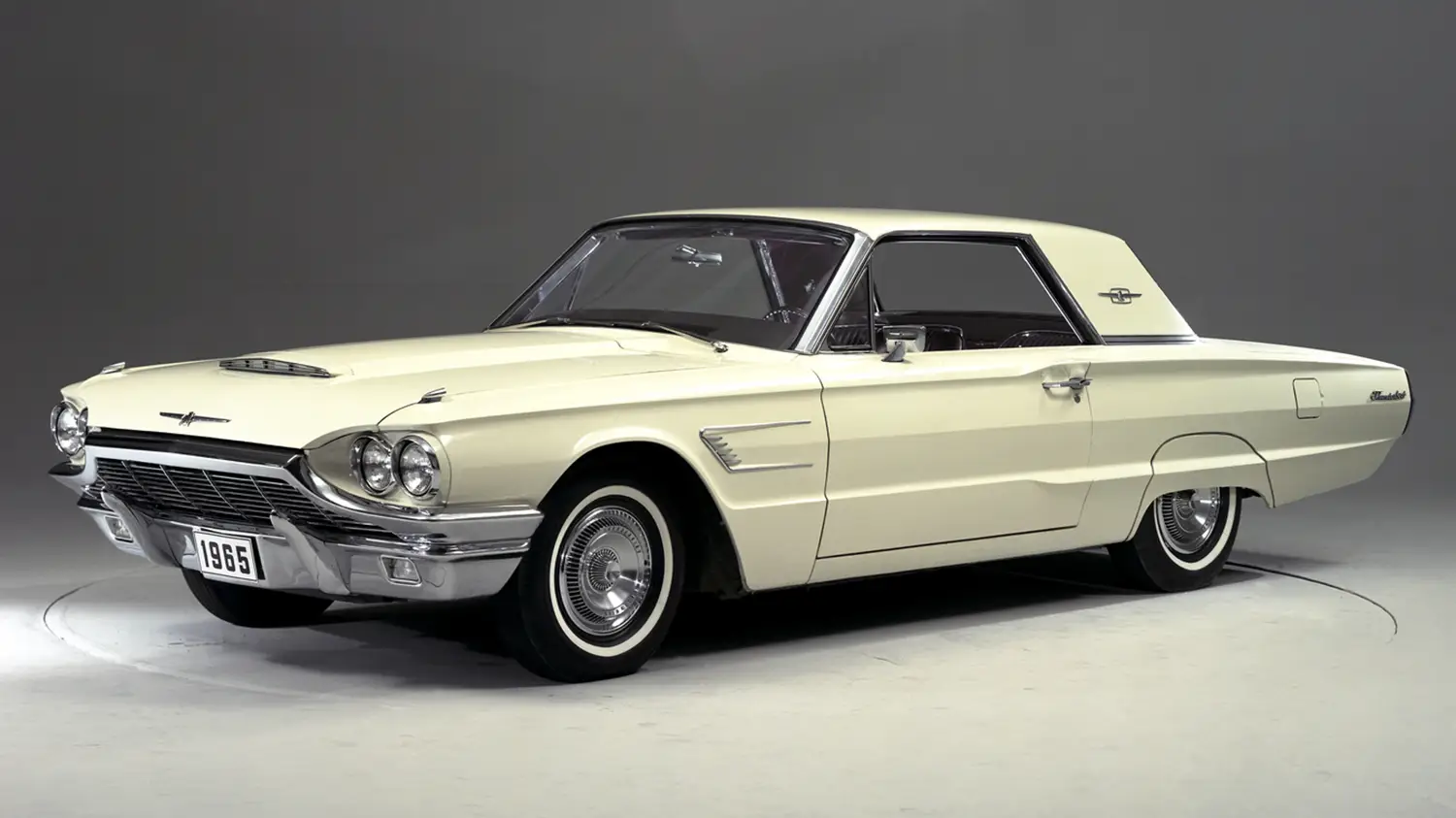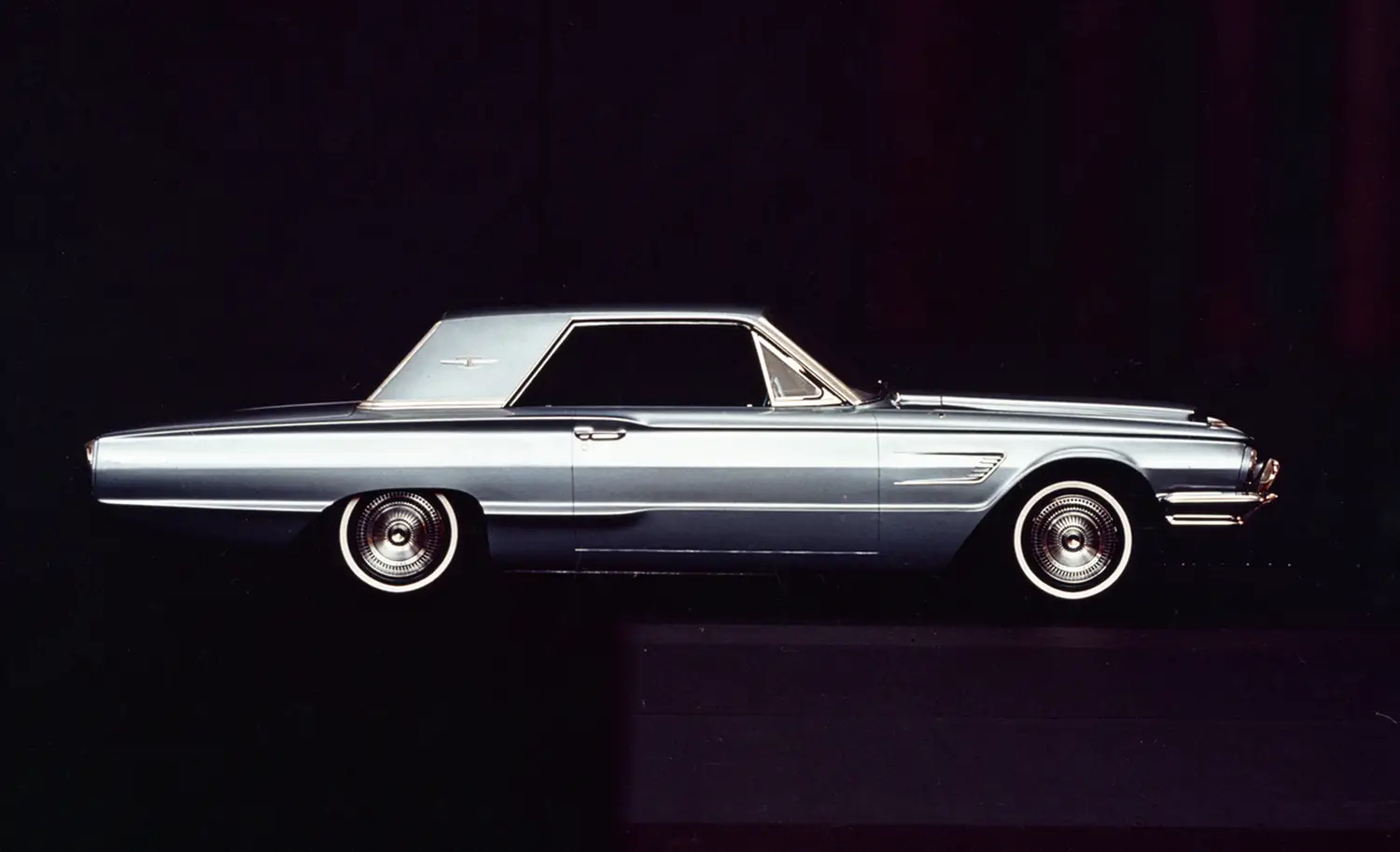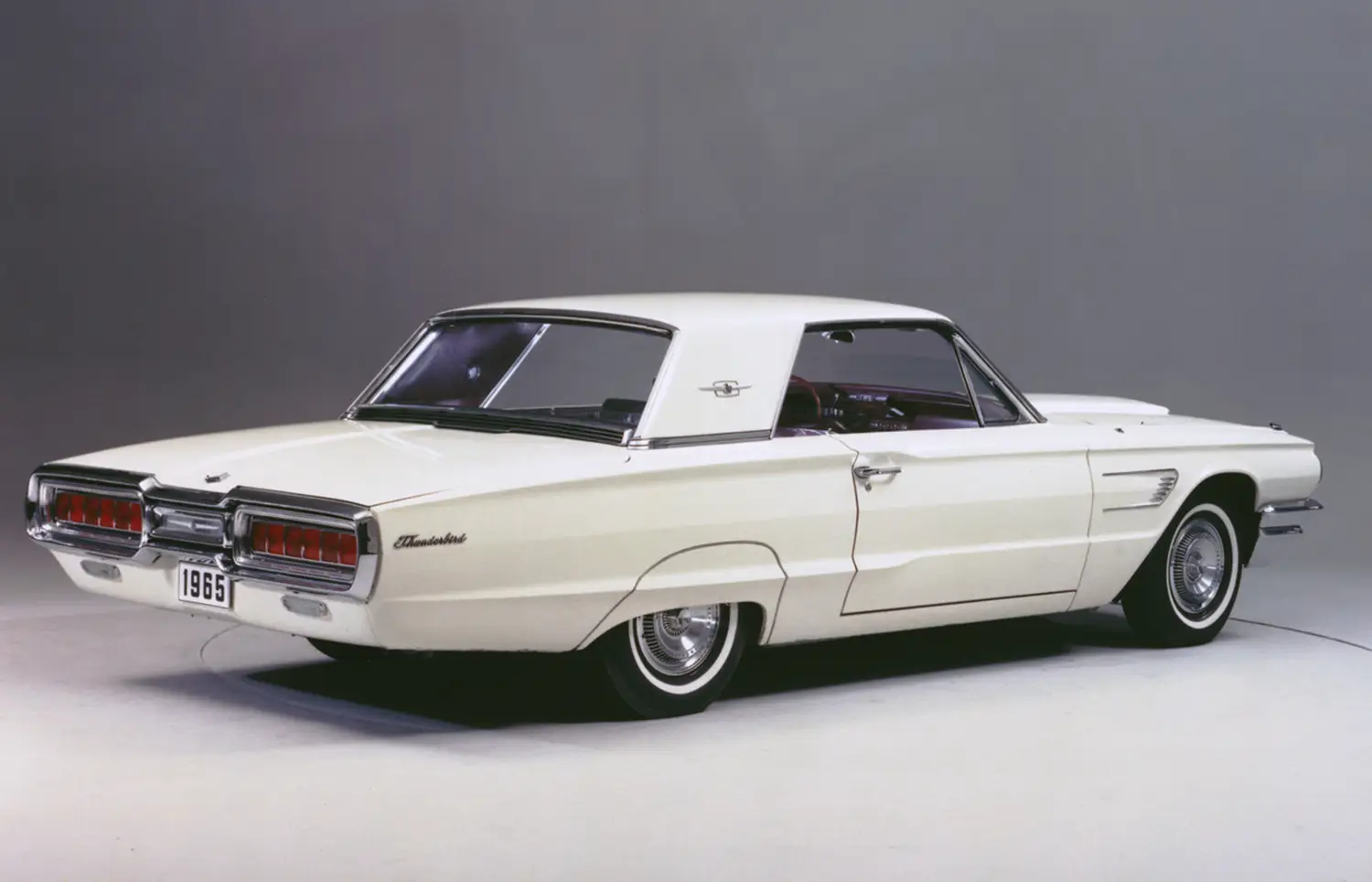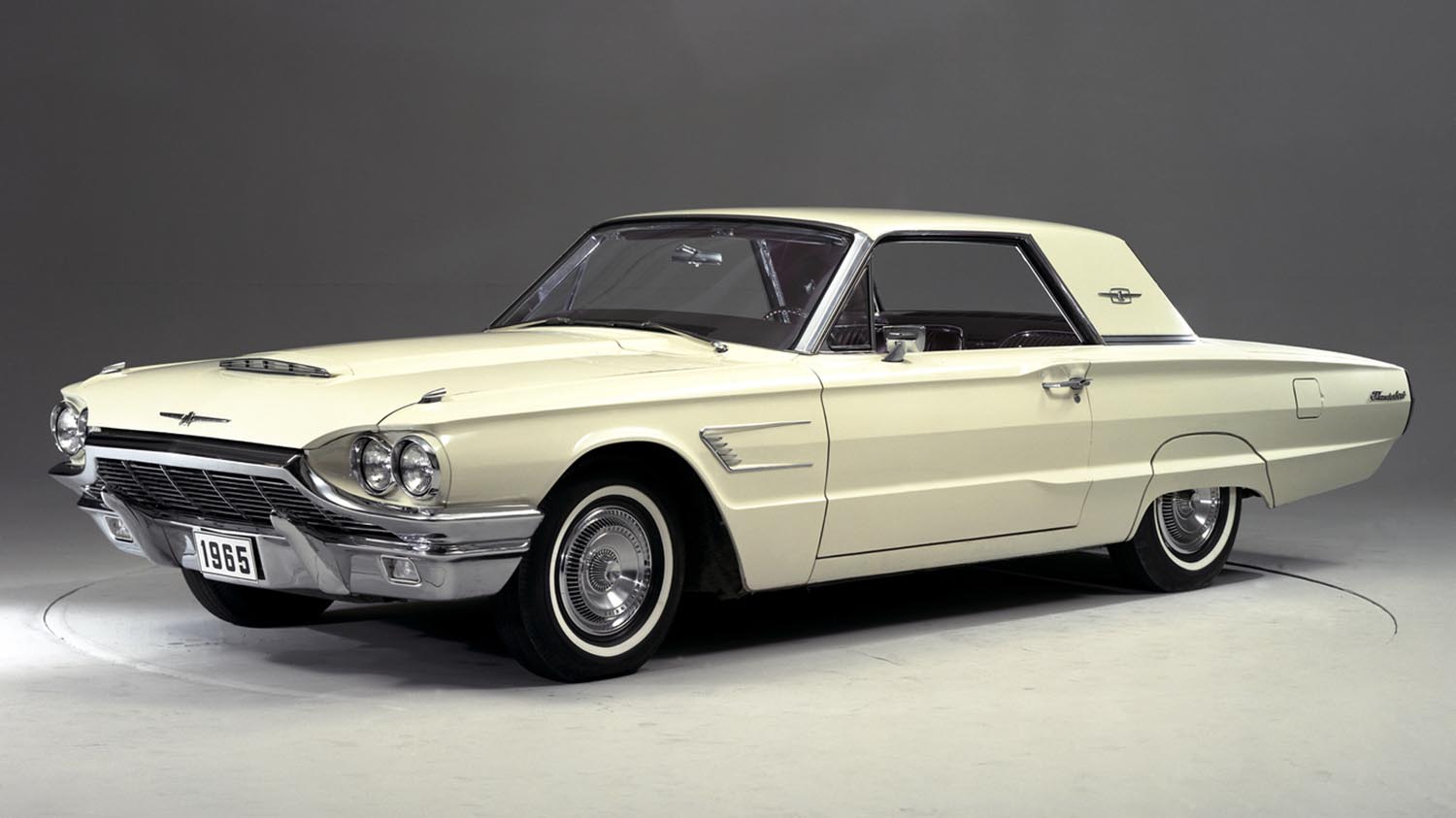
The 1965 Ford Thunderbird Hardtop marked a turning point in American automotive design. It wasn’t chasing raw performance anymore, it was pursuing elegance. Ford’s “personal luxury” vision became reality in the Thunderbird, and the 1965 model showed how comfort, technology, and design could coexist without losing personality.
The Shift Toward Personal Luxury
By the mid-1960s, the Thunderbird had evolved from a two-seat sports car into a full-fledged luxury coupe. The 1965 Ford Thunderbird Hardtop represented the third year of the fourth generation, a model that carried unmistakable jet-age inspiration. With sharp lines, bold proportions, and intricate detailing, it embodied the optimism of its time.
The squared-off front end featured a new egg-crate grille design, while sequential rear taillights, one of Ford’s signature features, added flair to its wide rear stance. The “Thunderbird” script stretched proudly across the back panel, reinforcing its identity as something more than a typical American coupe.
Inside the 1965 Ford Thunderbird Hardtop
Open the door, and the cabin tells the story of Ford’s design ambition. The aircraft-inspired dashboard curved around the driver, integrating chrome toggle switches, round gauges, and a center console that extended through to the rear seats. The four-seat layout became one of the Thunderbird’s defining traits, offering exclusivity and comfort in equal measure.
Power accessories, including windows, seats, and even optional air conditioning, made the Thunderbird feel more like a grand tourer than a muscle car. The swing-away steering wheel added both convenience and showmanship, a reminder that Ford wanted the Thunderbird to feel special, not just fast.

Engine, Power, and Performance
Beneath the long hood, the 1965 Ford Thunderbird Hardtop came equipped with a 390-cubic-inch (6.4-liter) FE V8 engine producing 300 horsepower. It delivered smooth, effortless performance rather than aggressive acceleration. The three-speed Cruise-O-Matic transmission ensured relaxed highway cruising, a key part of the Thunderbird’s appeal.
Despite its size and weight, the car handled predictably, aided by power steering and power brakes as standard. It wasn’t a sports car, but it had presence on the road, confident, composed, and unmistakably American. Later versions also introduced optional features like disc brakes, which improved stopping performance and reflected Ford’s growing commitment to innovation.
Design and Heritage Significance
The 1965 Thunderbird wasn’t just a car, it represented an identity. It helped define a market segment that would later include icons like the Buick Riviera and Oldsmobile Toronado. Ford understood that not every buyer wanted a race car; some wanted comfort and distinction with just enough power to remind them it was still a Thunderbird.
Even today, the 1965 model stands out for its unique balance of elegance and muscle. Its proportions, intricate details, and cockpit-style interior have made it a favorite among collectors and restorers who appreciate design over flash.
Summary
The 1965 Ford Thunderbird Hardtop symbolized a shift in American car culture, from performance-driven to personality-driven design. With its 390 V8 engine, aviation-inspired styling, and luxury-focused interior, it stood as a confident statement of refinement. It wasn’t built to race, it was built to arrive, and it did so with unmistakable grace.
Disclaimer: Content on this site is for informational purposes only. Vehicle specs, pricing, and availability may change. Always verify details with official sources before making decisions. Opinions are those of the authors.
Source: Ford Heritage Vault

